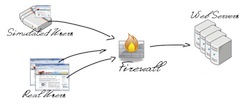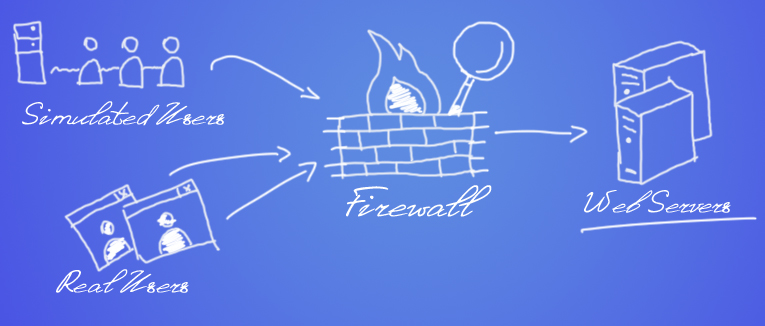Business Benefits of Synthetic End-user Monitoring
By Alex Carter on March 21, 2025

Synthetic monitoring of end-users transactions and actions on a website is the latest in development tools used by many web or online businesses. In the past businesses relied on customer or end-user experience monitoring to test out their website performance and new features that they introduced. Today many businesses are able to apply synthetic end-user monitoring as a replacement or supplement to real user monitoring.

Some of the benefits of using synthetic end-user monitoring include:
* Faster website uptime.
It is obvious that waiting for enough realtime users to test out a site, may require more time to get the kind of input or monitoring data that can be provided by using synthetic end-users. Synthetic monitoring of end-user transactions, actions and responses can be run as frequently as needed, every few minutes if necessary.
* No training or support needed.
The amount of time spent in training real end-users or supporting end-users questions on how to run a transaction is avoided. The synthetic user can perform the necessary testing of an application or website without having to be trained on how to run a transaction or perform steps in an application.
* Provides a means to track and record steps.
When using a synthetic end-user monitoring system, steps are recorded and this will allow a quick and inexpensive means to monitor applications and websites for vital information.
* Recorded information can be used to troubleshoot problems.
By using synthetic end-user monitoring, the recorded information gathered is tested and accelerates trouble-shooting and solutions, prior to actually introducing new applications or features on a website. Nothing is better than having the full picture or recording of all the steps that occurred when monitoring a transaction. These steps provide vital information about where problems occur and how often they occur. This can speed up the resolution of problems.
* Testing can be done from multiple locations.
Instead of using real users or beta-testers that are using one location, synthetic end-users are implemented from a multiple of locations internally or locally, in the cloud or on various networks from all over the world. Synthetic monitoring allows for quicker and less expensive means to test transactions from the cloud and many other geographical locations.
* Increased revenue and happier customers.
Making sure that website applications and services are fully functional by using synthetic end-user monitoring, downtime is lessened, revenues continue to flow and customers will remain satisfied with the service.
* Allows for secure testing and monitoring of web applications such as SaaS and cloud-based apps before releasing.
This will help in determining the overall useability of the web application and the interface with the network and any problems that might reside with either the application or the network.
Overall, by implementing synthetic end-user monitoring, there will be many benefits. If your website business is accessed from mobile devices or global clients, you can virtually test outside your location and from the cloud faster and inexpensively, predicting response time behavior and can carry out changes to offer quick website uptime, solving problems and producing happier customers. Third-party services that offer synthetic end-user monitoring are a solution for end-user experience monitoring and cut the need to hire beta-testers or middlemen and incur excessive expenses.
Monitor.Us provides free synthetic end user monitoring – get started now!
Posted in blog, Monitoring
Alex Carter
Alex Carter is a cybersecurity enthusiast and tech writer with a passion for online privacy, website performance, and digital security. With years of experience in web monitoring and threat prevention, Alex simplifies complex topics to help businesses and developers safeguard their online presence. When not exploring the latest in cybersecurity, Alex enjoys testing new tech tools and sharing insights on best practices for a secure web.
